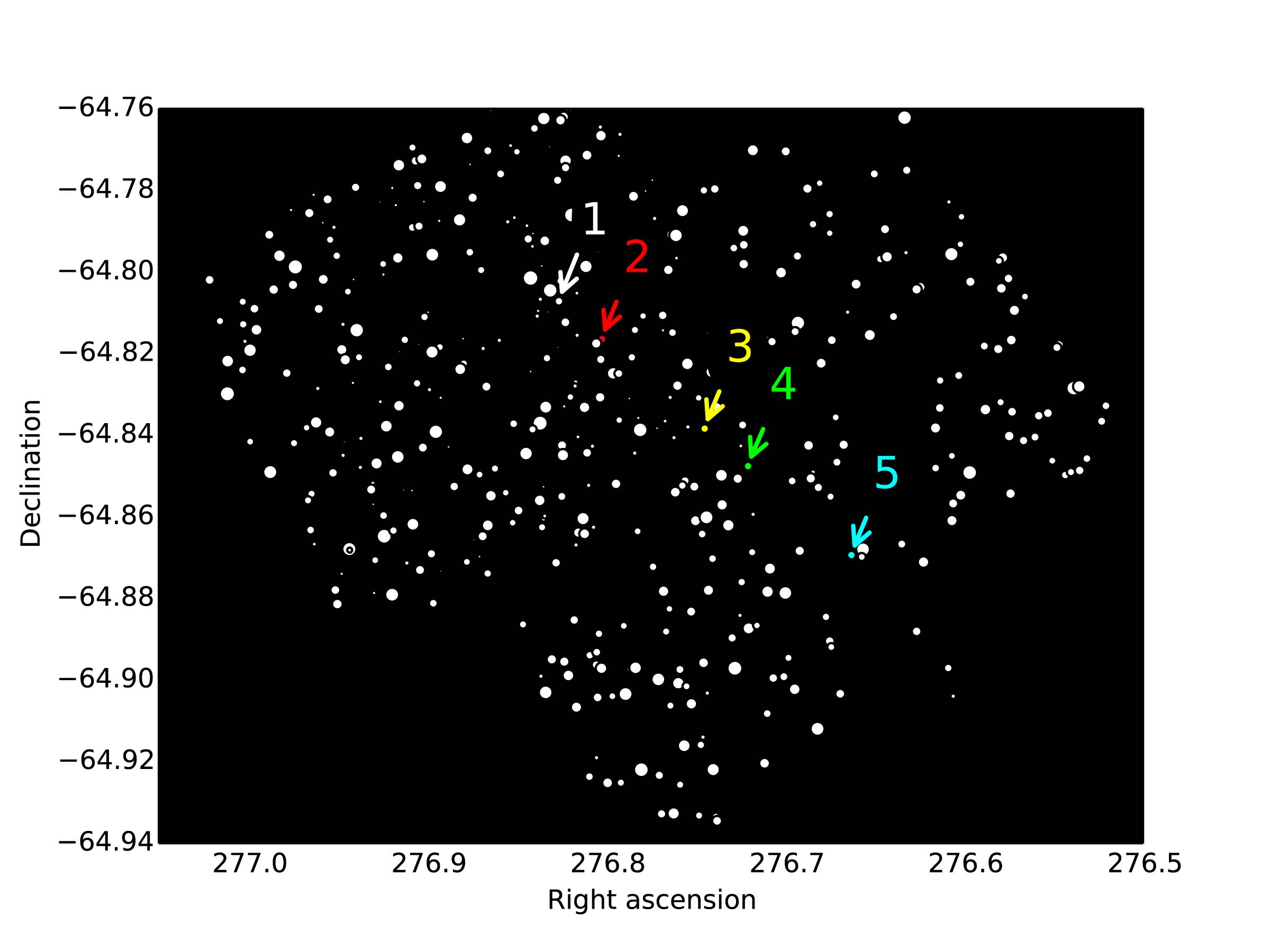IoW_20140703 - Gaia
Image of the Week |
asteroids at the "photo finish" |
|
Gaia will not only observe one billion "fixed stars" but also a few hundred thousand "moving objects", in particular comets and asteroids. When - and where - will Gaia observe a given moving object? And is the moving object observed really an asteroid?
In an article on the ESA Gaia blog Paolo Tanga showcases Gaia's capabilities in detecting and identifying asteroids and describes how observation challenges are being handled successfully. |
 |
|
Figure 1 - A bright star (on the left) and the asteroid (54) Alexandra (the slightly fainter source on the right) in a test image obtained by Gaia. This is a "photo finish" picture across a CCD edge: the objects are shown as a function of the observation time, with time running on the horizontal axis. The vertical extent of the image is the width of a single CCD. (The horizontal bands arise from a non-optimal CCD-response calibration that was used for the processing of this image.) |
 |
|
Figure 2 – The same as Figure 1, with time on the horizontal axis, but for the asteroid (4997) Ksana. Even if its position is only 1.26 seconds of arc from the prediction, its faintness make the detection more difficult to confirm. Is this really the asteroid or a spurious signal? Or an "anonymous" faint star that has not been catalogued before? The answer can be provided only by studying the object's motion (Figure 3). (The horizontal bands arise from a non-optimal CCD-response calibration that was used for the processing of this image.) |
 |
|
Figure 3 – Each dot in this plot represents a source observed by Gaia. Five consecutive scans (each lasting 6 seconds) have been used to cover this area on the sky. The scans are separated alternatively by 106 and 254 minutes, requiring in total two full rotations of the satellite (12 hours). In between the scans, an asteroid crosses the field. When Gaia comes back to have a look in the same direction, the asteroid has moved. The arrows indicate the positions of the asteroid (4997) Ksana at each different scan, starting from the first (labeled "1") to the last one ("5"). Its displacement with time unambiguously reveals the nature of the asteroid in crossing a field full of stars. |
| --------------- |
|
Gaia asteroid observations will be processed using the software pipeline designed and implemented by Coordination Unit 4 of the DPAC, running at the CNES processing centre (Toulouse, France). The data presented here are extracted from the results obtained by the Initial Data Treatment (IDT) pipeline, which was largely developed at the University of Barcelona and runs at the Data Processing Centre at ESAC. Simulations and predictions of the asteroid detections are performed at the Observatoire de la Côte d'Azur (Nice, France). |
|
Images: ESA/Gaia/DPAC/Airbus DS [Published: 03/07/2014] |
- Removed a total of (5) style text-align:center;
- Removed a total of (12) style text-align:justify;
- Removed a total of (1) border attribute.
- Removed a total of (1) cellpadding attribute.
- Removed a total of (1) cellspacing attribute.
Image of the Week Archive
- Removed a total of (1) border attribute.
- Removed a total of (1) cellpadding attribute.
- Removed a total of (1) cellspacing attribute.








































 Sign in
Sign in
 Science & Technology
Science & Technology
